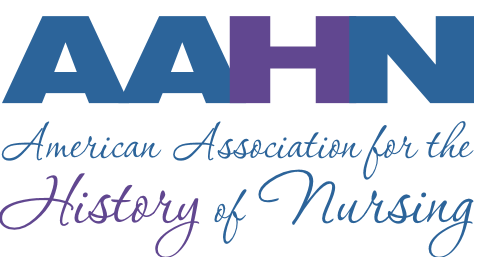- Home
- About AAHN
- Membership
- Research & Resources
- Publications
- Conference
- Members Only
- Contact Us
President's Message January 2022January is a month of new beginnings. This year feels a bit different due to the ongoing nature of the COVID-19 pandemic, but there is reason to look past some of the uncertainty in everyday life and enjoy what happens daily. I’m perpetually looking for inspiration as the new year unfolds and found it this year when my copy of Nursing History Review arrived. This year’s copy contained an exceptional Editor’s Note by Dr. Arlene Keeling. NHR is marking its 30th year of publication and she took the opportunity to thank our past editors, Dr. Joan Lynaugh, who served as the 1st editor from 1992 to 2002 and Dr. Patricia D’Antonio who assumed the position of journal editor in 2003 and served in this capacity until 2019. Arlene identified current challenges faced in publishing the Review related to cost, distribution and the need to present diverse and inclusive perspectives in journal content. I’m excited to see where Arlene and her team will take the journal in the years to come, but if Volume 30 is any indication, the future of the Review is bright. Arlene brought forth three challenges for NHR. The first challenge was to find a new publisher for our small, specialized journal that would meet the journal’s standards and wouldn’t increase costs. This challenge was met in September 2021 with our new association with Texas Christian University Press as a new contract was signed to publish the Review with Volume 31, which will arrive on schedule in January 2023. The second challenge takes some thought and deliberate planning. As Arlene stated in her note, “Our challenge is to expand the journal’s historiographies to include the perspectives of a diverse group of scholars and to analyze historical findings by examining the intersectionality of race, class and gender.” A new section was initiated in Volume 29 titled, “Hidden in Plain Sight.” The goal is to highlight a wide variety of racially and ethnically diverse nurses whose contributions were overlooked or ignored by historians who were traditionally well-educated, white, middle-class women who read history through the lens of their privilege. Work toward reflecting a more inclusive perspective is ongoing. And the third challenge is to make it clear to a broader readership the importance of understanding nursing history in order to understand the present. To meet this challenge, a new section has been added to the Review called, “Past is Prologue”, where perspectives from the past are provided to analyze the contemporary healthcare concerns. The current volume compares the 1918 Influenza and COVID-19 pandemics. I hope you will all take a break from the daily routine to read the new volume of the Review and share your volume with friends and colleagues who are interested. As we look forward to adding nursing history to our curricula while we work to meet the new Essentials, let us renew our focus and enthusiasm for nursing history and provide support to history scholars whose work is so important. There has never been a more important time to make nursing history visible while changes to healthcare are unfolding around us. In closing, please remember Arlene’s invitation that manuscript submissions are welcomed, suggestions about media and book reviews are invited and your feedback about the direction of the Review is needed. My thanks to Arlene and her team; Christine Hallett, Michelle Hehman, Annemarie McAllister, Erin Spinney, Lydia Wytenbroek and Doris Rikkers for an excellent 30th edition of the Review! All the best, Melissa Sherrod
|
